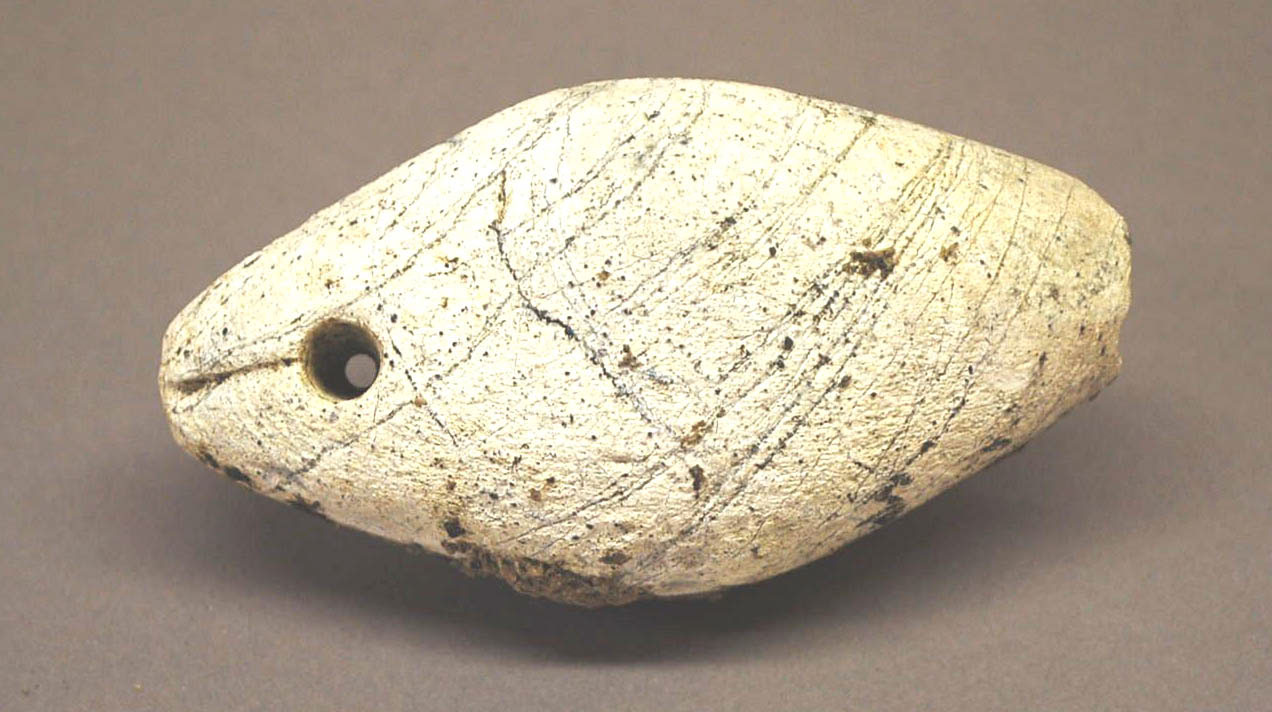7,000-5,000 Years Ago
We know a good deal more about this time period than earlier ones. People were becoming less nomadic, living in the same locations for longer periods or returning to them year after year. In the lowland villages of the northern Diablo Range, millingstones and handstones were replaced by mortars and pestles as the primary tools for processing plant foods. Archaeological sites from this period contain the earliest known fishing gear in central California, suggesting that fish had become a more important part of the diet.
By the end of this period people were living along the banks of Marsh Creek at the spot where John Marsh would someday build his stone house. Radiocarbon dates on two hearths (5,400 years old and 5,950 years old), a charred fragment of acorn nutshell (6,290 years old), and a piece of marine clamshell (7,060 years old) tell us that the surface of the floodplain was stable and available for human occupation for at least 1,600 years. We also have burned plant and animal remains from features that reflect the prehistoric diet of the people at this time: fish such as sturgeon, perch, salmon/steelhead, blackfish, stickleback, minnows, and suckers; large and small mammals (probably deer, elk, and rabbits); and a variety of seeds, greens, nuts, and other plant foods.

This period saw times of severe drought over much of the earth. The long droughts caused plants to die off, leaving many slopes without protective vegetation. When occasional rains did come, they washed away portions of these bare slopes and deposited them in the flats and drainages below. Once again, some ground surfaces and archaeological sites were buried. The radiocarbon dates from Marsh Creek indicate that a series of these events occurred sometime after 5,400 years ago, burying the hearths and other archaeological remains that are now exposed in the creek bank.

Bird Bone Whistles.

